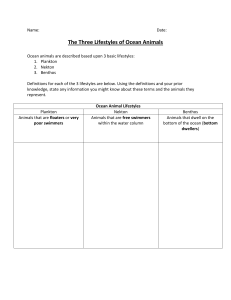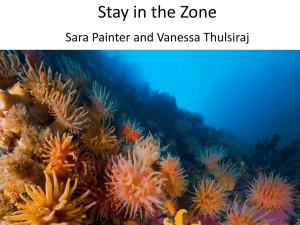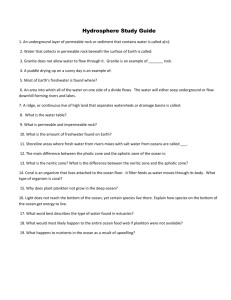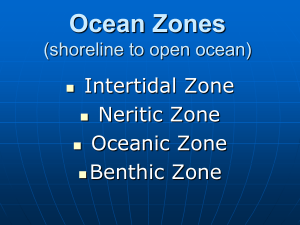Structure of the ocean
advertisement
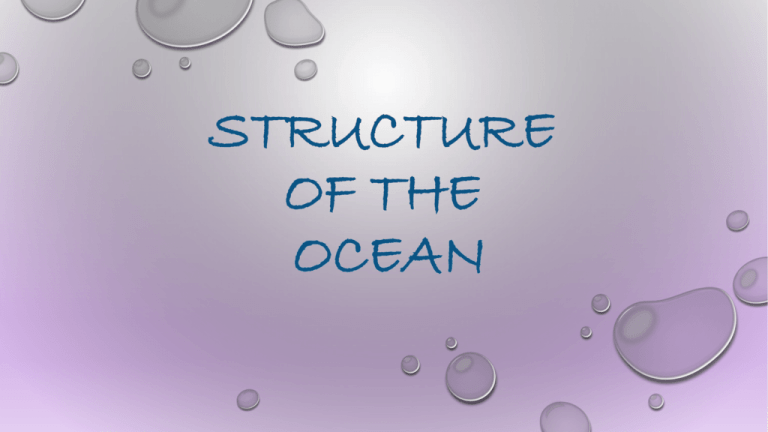
STRUCTURE OF THE OCEAN TIDAL ZONES INTERTIDAL ZONE • The intertidal area (also called the littoral zone) is where the land and sea meet, between the high and low tide zones. This complex marine ecosystem is found along coastlines worldwide. It is rich in nutrients and oxygen and is home to a variety of organisms. NERITIC ZONE • The neritic zone is the first 200 meters (656 feet) of ocean water, which includes the seashore and most of the continental shelf. Most photosynthetic life (life that uses light energy to convert carbon dioxide and water into food), such as phytoplankton, is found in this region. • Zooplankton, which are the floating creatures ranging from microscopic diatoms to small fish and shrimp, also live here. Many species of whales, like the gigantic blue and humpback whales, feed almost entirely on the tiny zooplankton. These whales force seawater through baleen plates (combs of bony material that form in the place of teeth) to filter out the tiny sea creatures. The largest of all fish, the whale shark, lives off plankton alone! NERITIC ZONE • Fish are found everywhere in the ocean, the abundance of small organisms in the neritic zone provides a plentiful source of food for larger animals. Great schools of tuna and mackerel feed on squid, krill and small fish that gather where warm waters meet nutrient-rich cooler waters. The largest example, the northern bluefin tuna, can grow to be more than 10 feet long and weigh over 1500lbs! Most sharks are common near the surface as well, some feeding on schools of fish, while others, including the basking and whale sharks, eat plankton. OCEANIC ZONE • The oceanic zone extends from 200 meters (656 feet) out and includes all areas all the way down to the bottom of the ocean, which can be thousands of meters deep. BENTHIC ZONE • The benthic zone of the ocean is varied. There are mountains, trenches, volcanoes, flat muddy areas, sandy areas and rocky areas. There is a wide variety of life that makes its home on the ocean floor. Some organisms live in the mud, some crawl or swim along the bottom and some anchor themselves to the ocean floor. OCEAN LIFE •All life in the ocean is divided into three main groups. They are plankton, nekton, and benthos. •Plankton are all of the creatures in the sea that drift and float and rely on the tides to move them from place to place. •Not all plankton are microscopic. They are either phytoplankton (microscopic plants) or zooplankton (jellyfish, copepods, arrow worms). •Many animals rely on plankton for their existence. NEKTON •Nekton are all of the animals in the ocean that are able to swim on their own, without the help of the tides. This includes over 20,000 types of fish in the sea. These animals range in size from sharks which 50 feet in length to fish which are less than an inch long. •Most nekton have streamlined bodies to help them swim more efficiently. •Some nekton can travel at remarkable speeds. The sailfish can swim up to 30 miles an hour. •Many nektonic animals are able to swim vast distances. For example, the eel can travel thousands of miles. BENTHOS •Benthos are animals which live at the bottom of the sea. •Examples of benthonic animals are sea snails, clams, sponges, sea lilies, and starfish.
